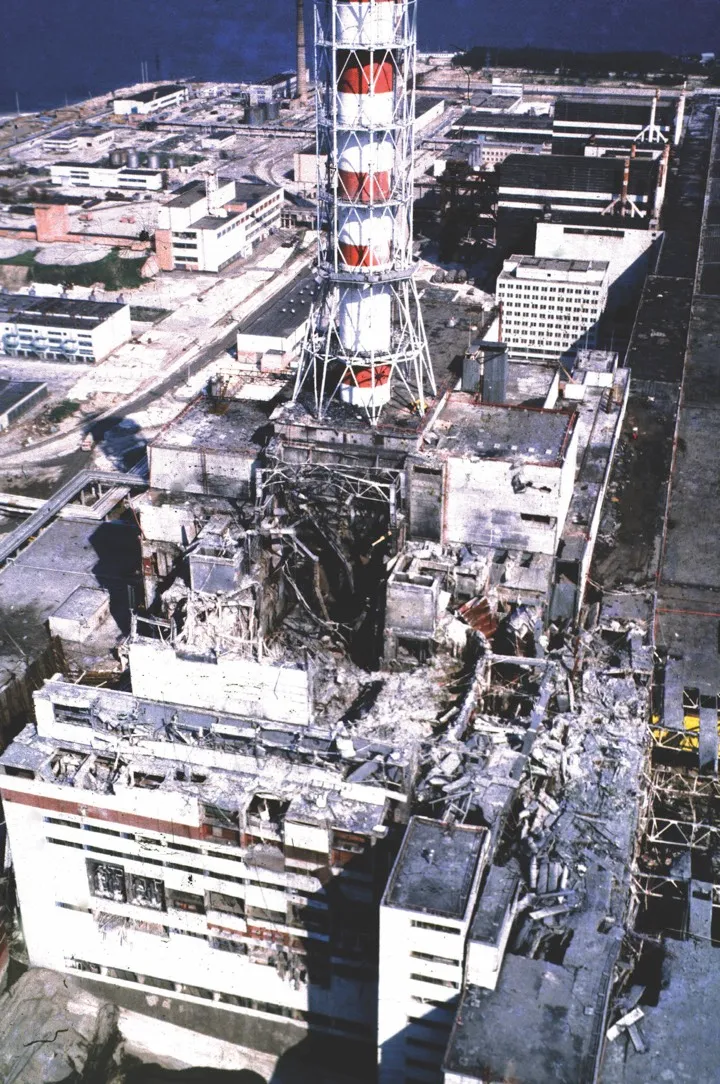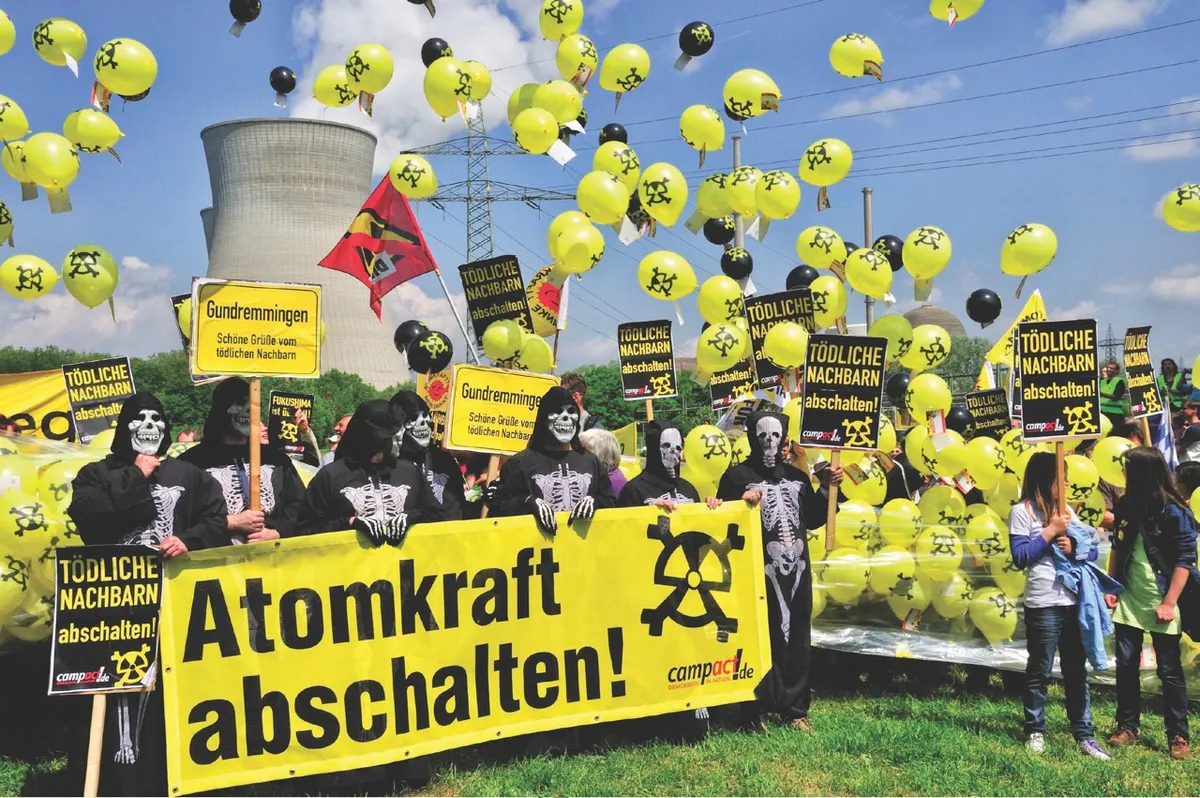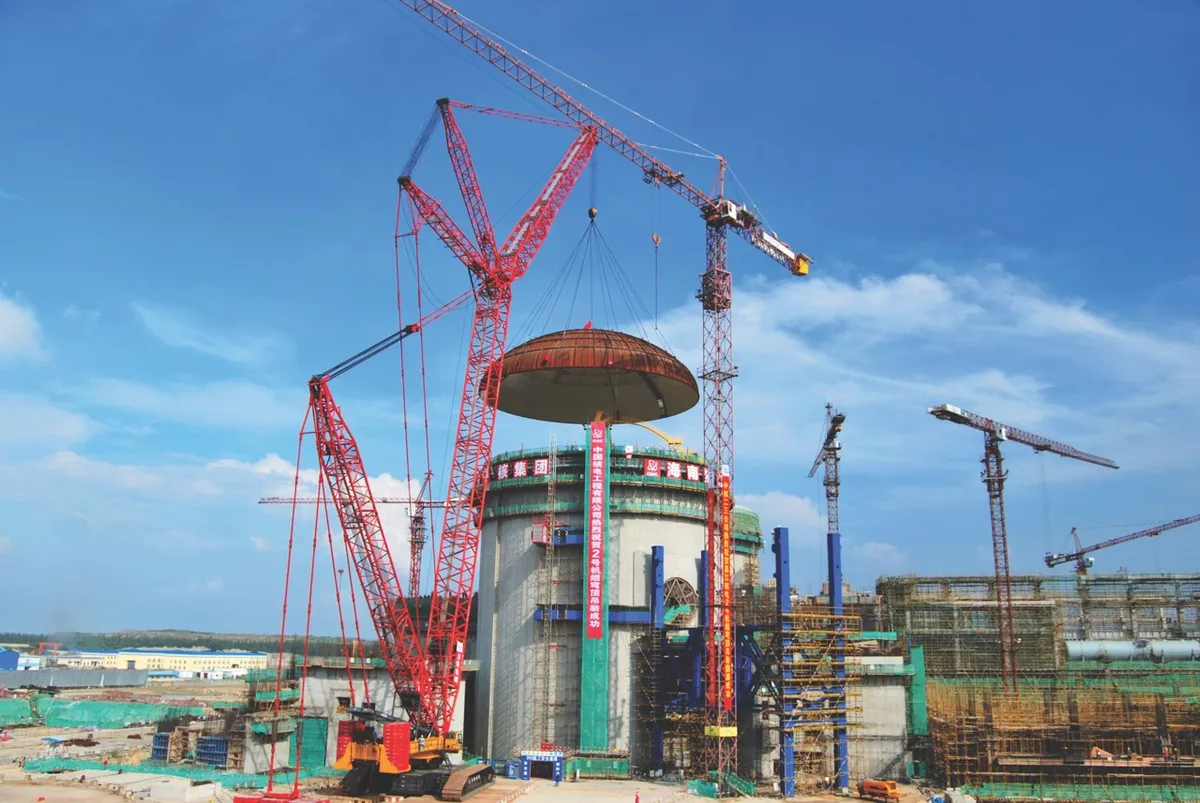On 11 March 2011, the future became the past. A magnitude 9.0 earthquake striking about 70km off the Pacific coast of Japan sent a huge surge of water towards the Fukushima Daiichi nuclear power plant. The control room tried to shut it down, but water damage caused the diesel generators to fail, preventing coolant systems from operating. Three of the reactors in the plant suffered core meltdowns, with a series of accompanying explosions and the release of large amounts of radioactive material into the environment. It was a decisive moment in the history of energy, turning a generation against nuclear power.
Rewind to 1946: The Atomic Age. Following the development of nuclear energy alongside nuclear weapons in WWII, newspapers, magazines and research papers were filled with bold predictions about a utopian future powered by the energy of the atom. David Lilienthal, chairman of the US Atomic Energy Commission, was among the most enthusiastic. “Atomic energy is not simply a search for new energy, but more significantly a beginning of human history in which faith in knowledge can vitalise man’s whole life,” he said.
Slowly, however, public perception of nuclear energy began to change. During the 1960s and 1970s, it gradually slipped in popularity. The 1979 nuclear meltdown at Pennsylvania’s Three Mile Island, combined with the growing environmental movement and the arms race of the Cold War, turned more and more people against the technology. The wave of public opposition crested in 1986 following the Chernobyl nuclear disaster. Less than 30 years after its grand arrival, the nuclear dream was on life support.

“The Chernobyl accident almost brought to a halt the deployment of nuclear power plants,” explains Nikolaus Muellner, head of the International Nuclear Risk Assessment Group, an independent body of nuclear safety experts. “The first generation of plants was constructed and built in the 50s and 60s, then the second generation was built in the 70s and 80s. Then you have a gap.”
During that gap, researchers came up with a ‘third generation’ reactor design that was significantly safer – it could handle an accident like Chernobyl without releasing significant amounts of radioactive material into the environment. But in the face of widespread public opposition, it was impossible to build and test these plants. The nuclear industry was stuck in limbo – it couldn’t improve the safety of its plants without building new reactors, but public fears over safety meant that no new reactors could be built.
Then the Fukushima disaster happened. Opposition to nuclear energy, which had faded somewhat over time, turned once more against the technology. Germany pledged to shutter all its reactors by 2022, while Italy held a referendum in which 94 per cent voted against a government plan to build new nuclear plants. In France, where nuclear was successfully sold to the public as a route to energy independence, the president François Hollande announced his intention to reduce the share of energy generated by nuclear.
Meanwhile, here in the UK, no new nuclear power stations have been built since 1995, and despite being given the go-ahead, current plans for energy company EDF to build one at Hinkley Point in Somerset have been met with opposition. So where does that leave nuclear now?
Is nuclear power safe?
Over the last 20 years or so, most Western nations have merely maintained their existing reactors, making incremental safety upgrades to meet regulations. Countries that chose to retain their nuclear plants extended their lifespans, in some cases well beyond their original design specifications.
“The reactors were designed for a lifetime of 40 years, and then they got extended to 60 years,” says Muellner. “The [older] reactors are going to stay online for a long time, and they dominate the total risk of a nuclear accident.” Safety levels, while not necessarily dropping, were certainly not going up. “If you build new plants somewhere, that’s an event that will get attention,” says Muellner. “But lifespan extension is something which is not perceived.”
Without building new plants, however, substantial leaps in technology were impossible, and the industry was forced to simply pray that there would never be another major nuclear accident.
But when you look at the raw data, nuclear energy comes out ahead of other options. Futurist and energy researcher Brian Wang ran the numbers shortly after the Fukushima accident back in 2011. He found that when you compare all power sources around the world in terms of energy output, coal and oil are by far the most dangerous, resulting in 100 and 36 deaths per terawatt-hour (TWh) respectively. This is mostly due to the significant air pollution they cause. Nuclear energy, on the other hand, results in just 0.04 deaths per TWh – lower even than renewables like wind and solar. This is because there are dangers involved with mining the materials needed for wind and solar, as well as risk associated with erecting wind turbines and solar panels in dangerous locations. Other studies show similar results.
So, how much is nuclear energy contributing to climate change? An operating nuclear reactor has near-zero carbon emissions, as its only outputs are heat and radioactive waste
So is nuclear power safe? That’s a matter of definition, says Muellner: “There’s a set of rules, they differ around the world, so the word ‘safe’ means something different in different countries.” There are some conventions – almost all safety regulations are based on probability. A plant may, for example, need to be engineered to withstand an earthquake that occurs once every 100,000 years. “But this doesn’t mean that an accident cannot happen,” says Muellner. “Weird accidents can happen – they have a small probability. But there is still a possibility that severe accidents, including releases, may happen in nuclear power plants.”
Another problem with this approach is that the probabilities of severe weather events are changing because of climate change. “You can’t say for sure that the data you recorded in the last hundred years are going to be valid in the future,” Muellner explains. “Currently it’s not clear how to handle this. There is the requirement, from, for example, the Western European Nuclear Regulators Association, to take into account your safety analysis for climate change. But how to do that is currently still under discussion.”
So, how much is nuclear energy contributing to climate change? An operating nuclear reactor has near-zero carbon emissions, as its only outputs are heat and radioactive waste. Of course things change slightly when you factor in the construction and decommissioning of the plant, the mining, processing and transportation of its uranium fuel, and the storage of nuclear waste, but the technology still rates well in terms of emissions when compared to coal, oil and gas. “If you don’t replace the existing nuclear power stations that we have globally then it makes meeting the objective of having a low carbon power system much much harder,” says Ben Caldecott, program director of sustainable finance at the University of Oxford’s Smith School.
There is much debate over the role of nuclear power in fighting climate change – in fact there’s a profound split in the environmental movement. A group of people that sometimes refer to themselves as ‘ecomodernists’ reject the environmentalist belief that nuclear power is bad. “Nuclear fission today represents the only present-day zero-carbon technology with the demonstrated ability to meet most, if not all, of the energy demands of a modern economy,” reads the Ecomodernist Manifesto, a document published by a group of researchers and activists in April 2015. “A new generation of nuclear technologies that are safer and cheaper will likely be necessary for nuclear energy to meet its full potential as a critical climate mitigation technology.”

While ecomodernists think that nuclear power could be a useful tool in slowing climate change, more traditional environmental organisations vehemently disagree. “Nuclear power already delivers less energy globally than renewable energy, and the share will continue to decrease in the coming years,” Greenpeace writes on its website. “Building enough nuclear power stations to make a meaningful reduction in greenhouse gas emissions would cost trillions of dollars, create tens of thousands of tons of lethal high-level radioactive waste, contribute to further proliferation of nuclear weapons materials, and result in a Chernobyl-scale accident once every decade. Perhaps most significantly, it will squander the resources necessary to implement meaningful climate change solutions.”
Those resources are significant. The centralised nature of nuclear power, compared to decentralised renewables, means that finding the cash to pay for new reactors is not easy. “The nuclear power industry is about really big engineering projects that take many years of planning, with designs that must be approved by regulators and take many years to get approval,” explains Caldecott. “It just can’t compete against decentralised renewable technologies that can be deployed quickly.”
The future of nuclear power
A number of new approaches to nuclear energy have been proposed that could solve some of those problems. Despite the scarcity of third-generation reactors around the world, a fourth generation is already on the drawing board. These are able to use far more of the available uranium, making them significantly more economical. Yet they still need major research and development before they can be built, which is a tall order in today’s nuclear-averse society. “I personally don’t think that we’re going to see a large-scale deployment of generation-four reactors any time in the future,” says Muellner.
Another potential option is to build thorium-fuelled reactors. Thorium produces far less dangerous waste than conventional nuclear energy and is three times more abundant in the Earth’s crust than uranium, although it also has its downsides. It will require significant research and development investment before it could be rolled out, and processing the fuel involves extremely high radiation levels. In a 2012 report into the technology, the Bulletin Of The Atomic Scientists journal wrote that thorium would “require too great an investment and provide no clear payoff”. Yet there are still some researchers who believe thorium to be the way to go.
Others have proposed that nuclear plants could be located several miles offshore on floating barges like those used in oil and gas drilling. This novel solution would solve three key problems for nuclear power: cooling the reactor; siting it away from residential areas; and resisting tidal waves like the one that submerged Fukushima. It could even be relocated in response to demand. Yet floating nuclear plants are not risk-free. They will be exposed to new problems such as boat collisions, terrorist attacks and sinking.
There is an alternative concept of ‘small modular reactors’. These miniature, sealed units are similar to the ones used to power nuclear submarines. These reactors could be deployed and it would be easy to scale them up or down to suit cities of different sizes. These reactors don’t require such huge up-front costs, so are much easier to roll out, but aren’t significantly cheaper than the big reactors in terms of investment per installed kilowatt. “We may see some of these,” says Muellner, “but I’m not sure that they’re going to make a difference.”

So is nuclear energy likely to be a part of our future? It depends. In China and India, where public opinion plays less of a role in governmental decision-making, officials are aggressively expanding their nuclear output with new, safer, third-generation reactors. China aims to have more than 58 nuclear plants by 2020, while India has a total of 21 reactors with more than 20 further units planned.
“If it’s government policy to deploy nuclear power, then it’s going to be built,” says Muellner.
But in the West, it’s not looking good for nuclear energy. A heady combination of high upfront costs, stringent safety regulations, difficulties in getting financing, unpopularity with the public, risk of weapons proliferation and rapid development of competing renewables means that building new plants is almost impossible. Nuclear power is getting squeezed out of the picture by alternative energy technologies that are cheaper, simpler and not so politically toxic. “Basically, everything is tilted in the favour of its [nuclear’s] competitors,” Caldecott says. “And that tilt will just get steeper and steeper.”
This article first appeared in issue 292 of BBC Focus magazine - subscribe here.

